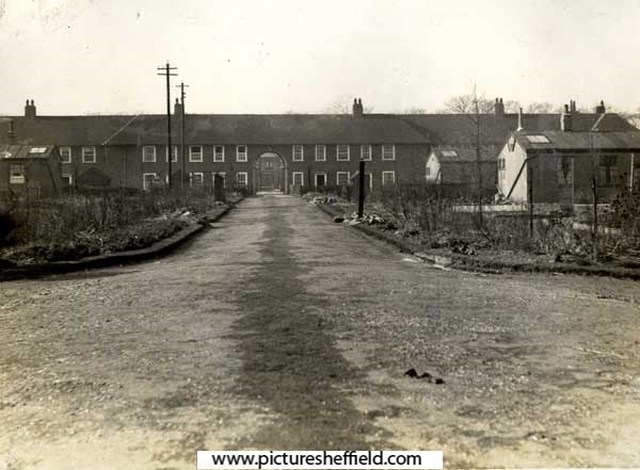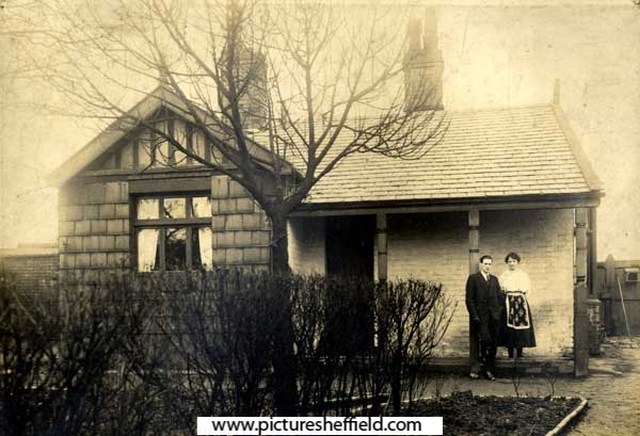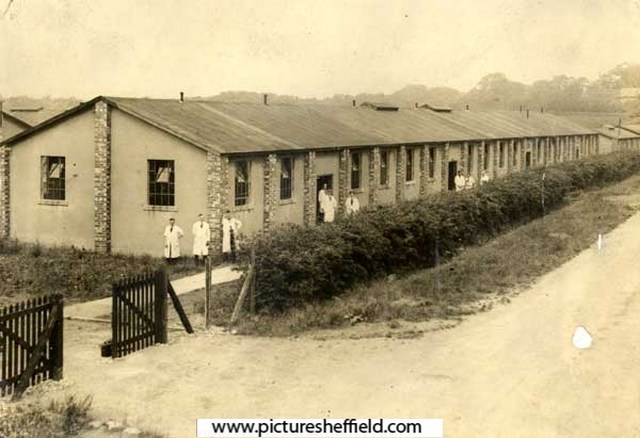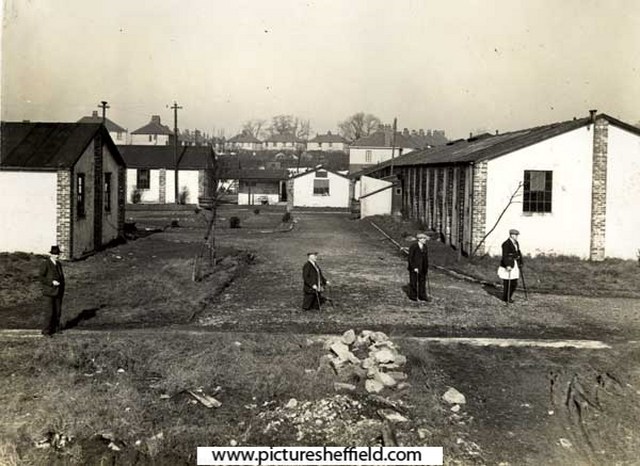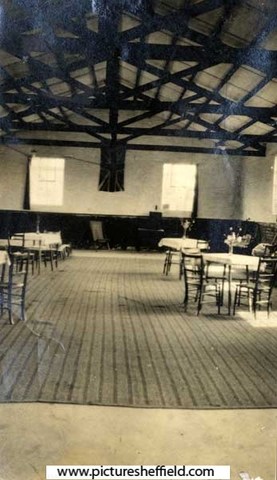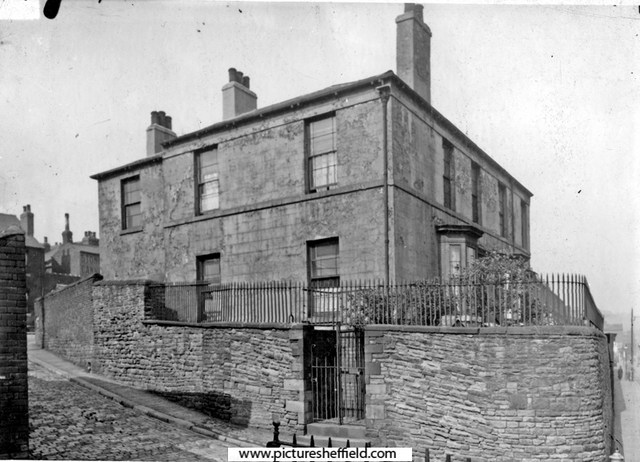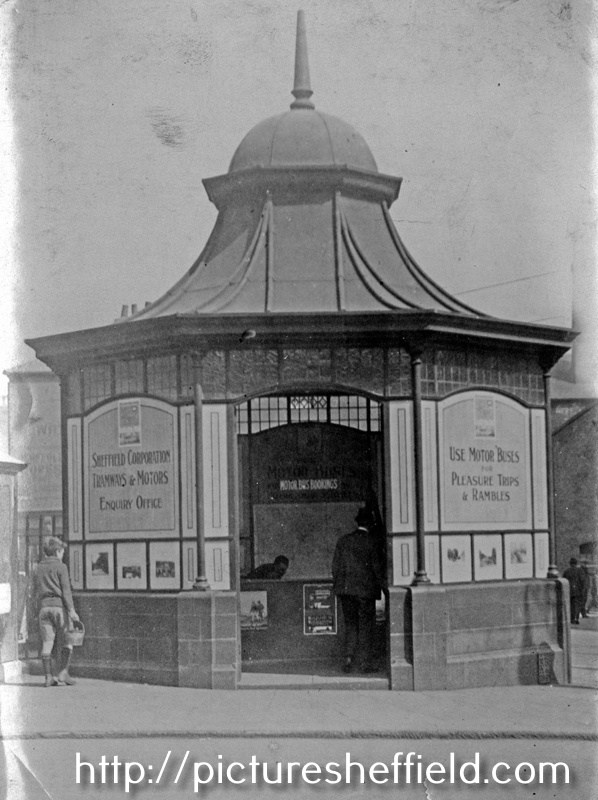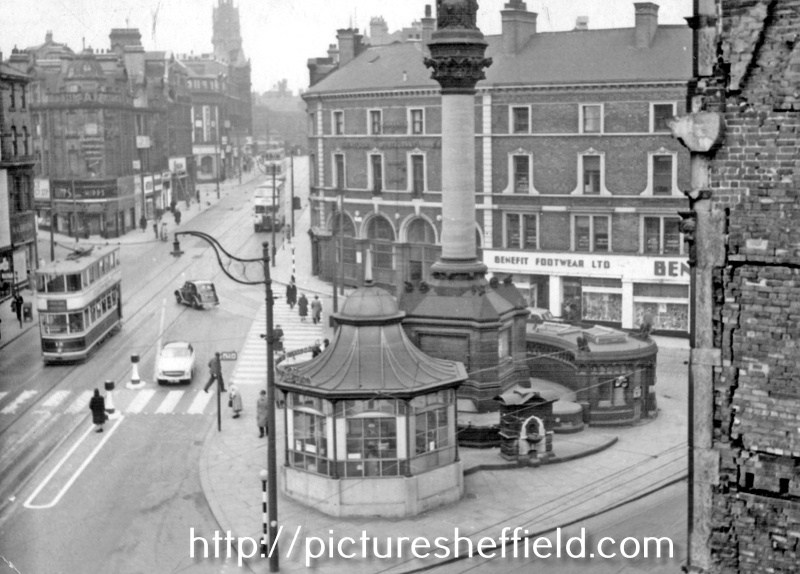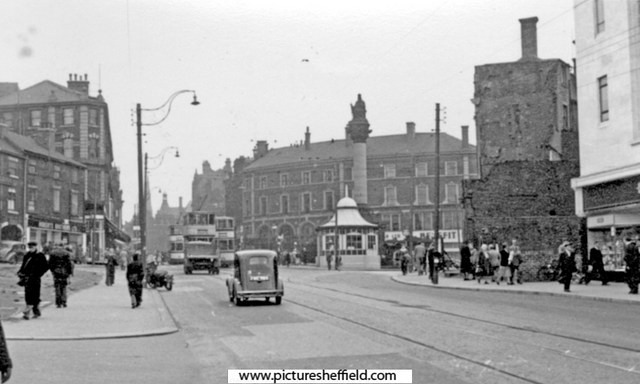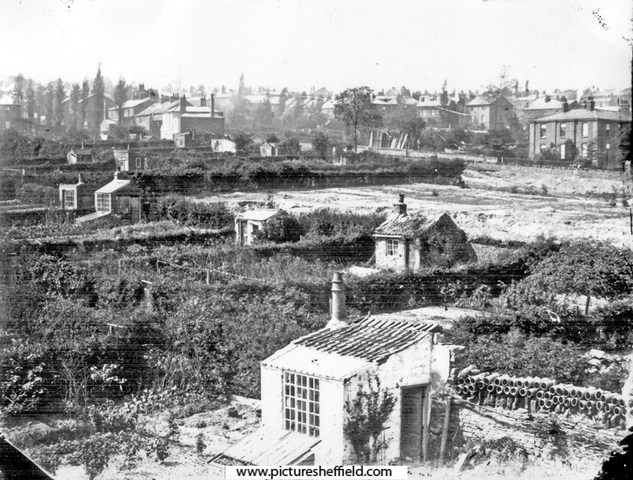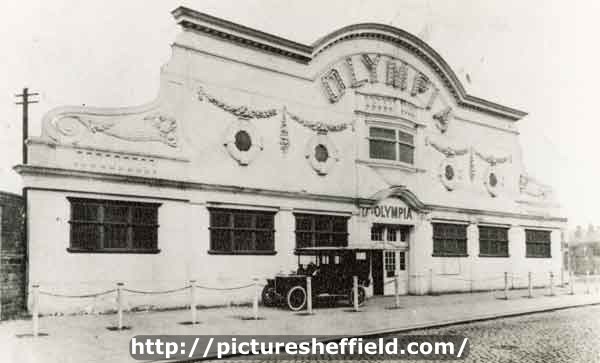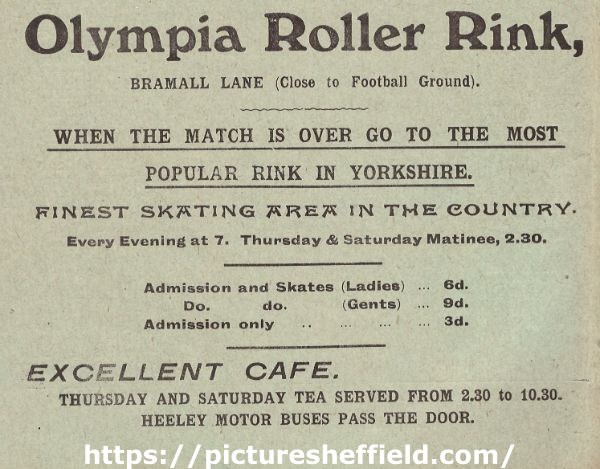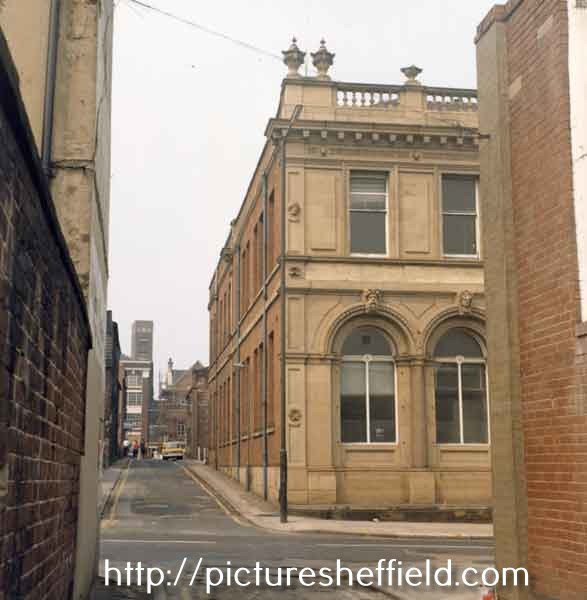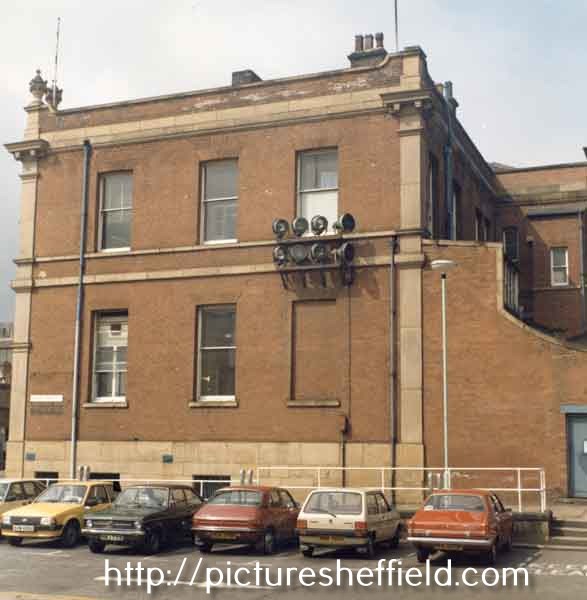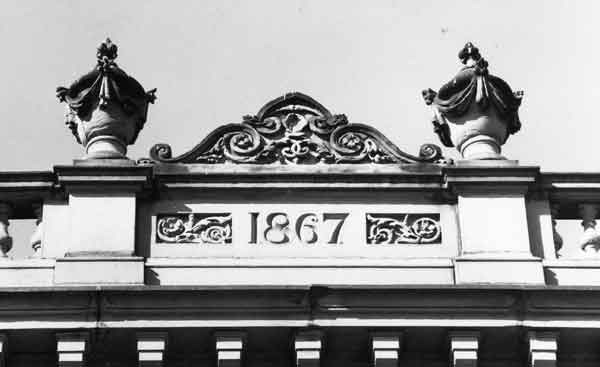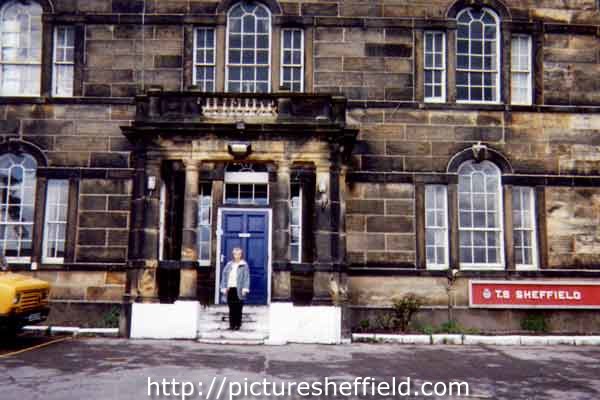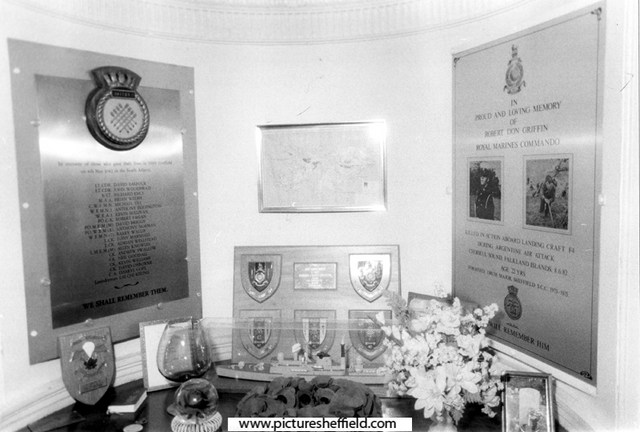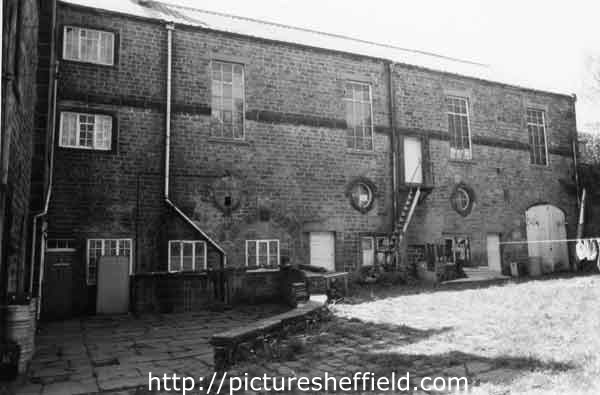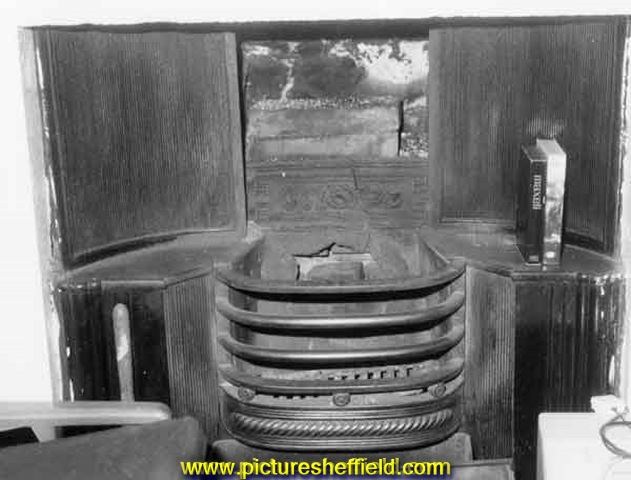Search the Community
Showing results for 'coal pit lane'.
-
A conversation with description of Chapel Walk and Nether Chapel from an earlier time. "Everard: Opposite us is Nether Chapel — the new Nether Chapel we old men should call it, since it supplanted the old building we remember so well. Amongst the seceders from the "Upper Chapel," and one who took a great interest in and was a large subscriber to the building of the Old Nether Chapel, in 1715, was a Mr. John Smith. On the authority of Mr. Hunter's "Gens Sylvestrinae," we learn that this Mr. Smith was born at Bell House, August 28th, 1684, and was baptised at Ecclesfield. He was apprenticed to John Winter, a considerable manufacturer in Sheffield, was admitted to the freedom of the Cutlers' Company in 1705, and became the Master Cutler in 1722. He was deeply engaged in the efforts of the Cutlers' Company to obtain powers to make the Don a navigable river by which Sheffield might be connected with the Humber. On that occasion the interests of the town were committed into his hands; and he went to London and so far brought over members of both Houses of Parliament to approve and vote for the design, that the object was attained in 1726. Mr. Smith was a person of a remarkably religious spirit. He died November 15th, 1753, at the age of sixty-nine, and was buried in the chapel yard. He was the great grandfather of the late Mr. Ebenezer Smith, who married a daughter of the Rev. John Harmer, the minister of Nether Chapel, and was the father of Harmer, Joshua, F. E. and Sydney Smith, now amongst us. Some years ago a curious old relic, in the form of a scrap of writing, came into my hands, which afforded a vivid glimpse of the state of feeling entertained by the Nonconformists of that day with regard to Popery. It is in the form of an announcement made by the clerk officiating at the Nether Chapel, (Jeremiah Marshall byname,) on Sunday, the 4th November, 1750, informing the congregation that a public service would be held on the next day in the chapel on a special occasion. The Rev. John Pye, the uncle of the late Rev. John Pye Smith, was at that time the minister. The following is a copy of the notice in question: — "Please to take notice, that to-morrow will be the return of the 5th of November. There will be a Sermon preached here in commemoration of two remarkable deliverances in our favour, both as Protestants and Englishmen. The one was the Powder Plot, in the reign of King James the First, 1605, now 145 years ago; a plot that could be contrived by none but the Devil and his younger brother, the Pope of Rome, and his accursed crew. The other was the ' Revolution' in the person of the renowned Prince of Orange, 1688, now 62 years ago. He, as an instrument under God, delivered us from Popery and Slavery; and the memory of the great William the III. will be sweet and valuable to every true Briton while the world endures." From what I happen to know, I have little doubt that a worthy ancestor of mine (one of the seceders from the Upper Chapel) would relish and endorse the good old clerk's announcement, and duly attend, with his family, the appointed service. Although I should not like to undertake to defend every word of Mr. Jeremiah Marshall's trenchant phraseology, yet I do admire the spirit of sturdy Protestantism and love of civil and religious liberty, that it expresses. Leonard: I was reading, the other day, in the Sheffield Mercury, of May 12, 1827, a long account of the foundation stone laying on the previous Monday, May 7. It gives in full the "oration" pronounced by the Rev. Thomas Smith on the occasion, which is interesting as containing a sketch of the history of the chapel and of his predecessors in the ministry. The inscription was as follows : — The Lower Chapel built 1715; Re-built by Public Subscription 1827. Thomas Smith, A.M., Minister. William Parker, James Barton, David Haslehurst. Deacons. Watson, Pritchard and Watson, of York, Architects. Below, this inscription, with a few verbal alterations, was repeated in Latin. On a roll of parchment, enclosed in a bottle and deposited under the stone, was the following history: "The Nether Chapel having stood 112 years had become inconvenient to the congregation; and is therefore rebuilt by public subscription at an expense of about £4000, including £700 paid for additional land. A considerable part of this sum has been raised by weekly contributions since April, 1821, chiefly collected by ____" "Here," says the Mercury, "follows a list of twenty-one names, but we forbear inserting them from motives of delicacy." Reading the report now we can only regret that the newspaper, in having such a tender respect for the modesty of the collectors, deprives us of a useful bit of town-lore. Twiss: We can get the names of the successive ministers from Hunter and other sources, but no one ever thinks of recording the deacons' names. Yet such a list would suggest many memories to old Sheffield dissenters. Everard: A reminiscence I have of the opening of Nether Chapel in 1828, enables me to give you a glimpse of one who possesses a fair claim to rank among the Old Sheffield Worthies — the Rev. William Thorpe. He took part in the opening services, and that was his last appearance in his native town, since his death followed not very long after. I have often thought that there could scarcely be a more majestic and dignified appearance in the pulpit, or a nobler specimen of popular pulpit eloquence. William Thorpe was born at Masbro'. His father was the subject of a remarkable conversion.* Assembled with some boon companions one evening at the public-house, the conversation led to the agreement that each of them should take a text at random from the Bible, and try which could best imitate the preaching of the Rev. Charles Wesley, who had been lately visiting the neighbourhood. Three of his companions had successively ridiculed all things sacred, when it came to John Thorpe's turn. He mounted the table, opened the Bible, and his eye fell on the text — " Except ye repent ye shall all likewise perish." He was sobered in a moment. The impression made upon him was profound, and he proceeded to deliver a solemn and earnest discourse to the no small chagrin of his auditors. He was accustomed to say afterwards, "If ever I preached in my life, by the assistance of God, it was at that time." Having finished, he left the room without another word, and from that hour was a changed man. At first he joined the Methodists and was one of their preachers, but afterwards he became the minister of the Independent Chapel at Masbro'. He died there, November 8th, 1776, aged 46, whereupon his widow removed to Sheffield with the children, and she became on intimate terms with my grandmother and family. My father described her as a stout, noble-looking woman; with bright dark eyes, a Roman nose, and hair of raven gloss and blackness. William was very much like his mother, inheriting her features and expression; and, as he advanced in manhood, assumed a similar portly form and dignified mien. At a suitable age he was apprenticed to the "silver-plated" business with a firm, the exact name of which I have forgotten, but of which Mr. Morton, the late Thomas Dunn's maternal grandfather, was a principal partner. William was a very lively youth, full of fun and practical joke; but, at the same time, was clever, intelligent, and well-informed; a great reader, more especially of history, and possessing a memory of an extraordinary kind. On one occasion he was ordered to make a teapot according to the size and pattern of an old one that had been sent with special directions from the owner that the new was not to differ in any respect from the old. Young Thorpe carried out the instructions to the letter, rubbing off the plate and bruising exactly as the old one was bruised. Many of Thorpe's fellow workmen were imbued with the extreme views of Jacobinism, and at their instance he challenged Mr. Macready, the father of the great tragedian, who was at that time the lessee and manager of the Sheffield Theatre, to a public discussion on the causes and principles of the French Revolution. This Mr. Macready accepted; and the meeting took place in the Freemasons' Lodge, in Paradise Square (recently Mr. Hebblethwaite's school-room), which was crowded to excess. The late Mr. William Ibbitt's father belonged to the same trade, and was present on that occasion. According to his account William had quite the mastery over his opponent, and at the end the meeting, by a large majority, voted the youthful champion of political freedom the victor. The Rev. Jehoiada Brewer was at that time the minister of the Queen Street Chapel ; and he held similar political views. William Thorpe was happily brought under his influence, and became a decidedly religious character. At length he entered on the regular discharge of the duties of the Christian ministry, though without passing through the process of an academical training. The first place in which William Thorpe was located was as the pastor of the Independent Church at Shelley, a Yorkshire village, whence, after about a year, he went to Chester. In 1796, he became the minister of Netherfield Chapel, Penistone. In 1800 he removed to London, and thence to Bristol, where he remained to the end of his life. On the memorable occasion of the opening services of the new Nether Chapel, in the month of August, 1828, the chapel was crowded to excess.The preacher was a tall, big man, and very corpulent, but without anything heavy or vulgar about the form and expression of the face. On the contrary, his features, rising above a remarkable double chin, were finely and even delicately formed, more especially the nose and mouth. His high forehead was bald, and what portion of hair he had was of a dark colour, with a touch of grey on his short, slight whiskers, His nose was somewhat of the Roman type; his eyes were black and piercing; with a small mouth and arched eye brows. His voice was remarkable for its compass and power, and was apt to swell into thunder tones as he denounced, in awful terms, the doom of the impenitent, or become modulated into accents of the most persuasive tenderness, in urging sinners to repent and believe in the Saviour. The subject was the Christian doctrine of the Atonement. This he treated in his own peculiar style, and with a fulness of illustration, and a clearness and force of argument that I never heard exceeded; nor, indeed, so much matter on that subject compressed within the limits of a single sermon. It is true he preached for above an hour and a half, hut the attention of the people was riveted from first to last. The impression produced on the minds of his hearers by this discourse was very great. Himself the son of the Rev. John Thorpe, he was the father of another Independent minister of the same name, who was for some years the minister of Mount Zion Chapel. Leighton: Chapel Walk, between Nether Chapel and the Wesleyan Chapel below (built in 1780), formerly came into Norfolk Street by a series of steps. They were removed at the same time as those in Virgins' Walk and East Parade, descending into Campo Lane, by a person named Marriott, a filesmith, who had the control of the highways. Wragg: Chapel Walk is one of our old thoroughfares. It formerly contained, with their backs to it, some very old frame houses, built of lath and plaster." Extract of pages 242- 247, from Reminiscences of old Sheffield, its streets and its people edited by R. E. Leader 1875 from letters and articles in the Sheffield and Rotherham Independent 1872/3.
-
James Curtis, (his father a soldier who'd been stationed in Jamaica) was born at sea aboard HMS Chichester during his parents return voyage to Britain 25 April 1790. Enisted as a Private in the 1st Grenadier Regiment of Foot Guards in Sheffield on 14th September 1812. Served in Spain and Portugal during the Peninsular War and later fought in France and Belgium and at the Battle of Waterloo on 18 June 1815 with Lieutenant Colonel H. P. Townshend's Company, 3rd Battalion. Claiming never to have been wounded in the whole of his service, was discharged from the Army in London on 16 March 1822; paid marching money from London to Sheffield; a journey of 162 miles which took 17 days. James, (according to the parish record) a widower married spinster Alethea Naisbitt on 22 August 1823 at Sheffield Parish Church (now the Cathedral Church of St. Peter and St. Paul). Alethea, born Sheffield in 1797, the daughter of William Naisbitt, a hairdresser. James and Alethea had twelve children, nine of them girls, all born in Sheffield: Jane (1823), Theresa (1826), Clarissa (1827), William (1830), Lucy (1831), Harriett (1833), Mary (1834), Alethea (1837), Hannah (1839), George (1840), Sarah (1841) and John (1842). 1841 Census living at Silver Street Head, James had gone into partnership with Henry Ibbotson in the firm of Ibbotson and Curtis, joiner's tool and brace bit makers with workshops in nearby Lee Croft. The partnership was dissolved 18 December 1841 but James continued to be a joiner's tool maker for the rest of his working life. Alethea died on 18 May 1849 in Harvest Lane, Neepsend aged 52. James never remarried. At the time of his death 20th January 1882, James Curtis was living in Sheffield at Court 4 House 3, Trafalgar Street with Clarissa and the family of her daughter Alethea Linton. Buried at Christ Church, Heeley four days later. Read more about James Curtis and his family in this Totley History Group article dated November 2020: https://www.totleyhistorygroup.org.uk/people-of-interest/james-curtis/
-
She died on March 29th. The chief mourner was the youngest and only surviving daughter of the deceased, and herself between 50 and 60 years of age. My research showed that George Prince appears on the Waterloo Medal Roll 1815. He was a private 1st Battalion 95th Regiment of Foot Captain E. Chawner's Company Polly aged 59 was actually named Mary and can be found in the 1851 census living with her husband George aged 76, a cutler and her daughter Jane aged 15 who is a button cutter, at Law St in the Park District of Sheffield. By 1861 George has died and Mary is working as a charwoman. In 1871 she was working as a laundress. By 1881 now aged 87 she is living with Jane and her husband at Hague Lane and is classed as a pauper claiming relief. At some point after this she must have been admitted to the Workhouse at Fir Vale. PRINCE, Mary (Widow, age 101). Died at Sheffd Union; Buried on March 13, 1888 in Consecrated ground; Grave Number 13, Section U6 of Burngreave Cemetery, Sheffield.
-
Painted Fabrics - The Haig Homes. arc00616 Painted Fabrics Village - 'Wallwork and his wife outside his house'. Sheffield. arc00615 Painted Fabrics Village, Norton Woodseats. arc00613 Painted Fabrics Village, Sheffield. arc00617 Painted Fabrics Village - new factory in the model village at Coal Aston. arc00614
-
Penistone Road from the junction with Barrack Lane (wall of Old Sheffield Barracks not Hillsborough Barracks) looking towards the Pigeon Lofts. s26386 Date: 06/10/1987. Penistone Road looking towards Balaclava Road and Barrack Lane (after the service station). 12th June 1967 The Old Barracks Infirmary (later used as flats) which stood at the junction with Penistone Road and Barrack Lane had at this time been demolished. Due to copyright restrictions only the thumbnail is available to view on Picture Sheffield website. https://www.picturesheffield.com/frontend.php?keywords=Ref_No_increment;EQUALS;s18659&pos=65&action=zoom&id=21320 Copyright. H. Ainscough.
-
Link restored: Old Barrack's Infirmary, Barrack Lane / Thirza Street. The old Barracks were on Penistone Road which was formerly called Low Road. s07451 Nos. 225 and 227, Penistone Road at the junction with Barrack Lane formerly the Old Barrack's Infirmary but being used as Flats. 18th February 1964. https://www.picturesheffield.com/frontend.php?keywords=Ref_No_increment;EQUALS;s18668&pos=1&action=zoom&id=21329
-

Moorhead Transport Enquiry Office
Ponytail replied to Sheffield History's topic in Sheffield Buses, Trams and Trains
Sheffield Corporation Tramways and Motors Enquiry Office, Moorhead, next to Crimean Monument. u03702 1927. https://www.picturesheffield.com/frontend.php?keywords=Ref_No_increment;EQUALS;v00942&pos=7&action=zoom&id=42733 Moorhead looking towards Pinstone Street including Nelson Hotel, Crimean Monument and Passenger Transport Enquiry Offices. Button Lane on extreme left.1952.s00388 Elevated view of Moorhead looking towards Pinstone Street, Passenger Transport Enquiry Offices and Crimean Monument, foreground, Nelson Hotel, in background. 1955. s18118 -
The Gill Cars set out into gardens for Thomas Rutherford in 1805; with streets and building lots plotted on in 1818-1819. Shows Broomhall Lane. https://www.picturesheffield.com/frontend.php?keywords=Ref_No_increment;EQUALS;arc04067&pos=71&action=zoom&id=93984
-
Gardens in the Broad Lane area. Plan of a close adjoining to the Broad Lane with the Gardens etc. formerly part of the said Close, and of another Close contiguous there to as it is now d[ivided] into Gardens the whole being the property of the Duke of Norfolk. 1768. One close entirely, the other partly divided into gardens; these are the closes later to be divided by Garden Street. Tenants names given. Shows 'Burying ground of the people called Quakers'. https://www.picturesheffield.com/frontend.php?keywords=Ref_No_increment;EQUALS;arc02095&pos=685&action=zoom&id=76290 The Close lately held by Thomas Hudson of the Earl of Surrey, divided into lots for gardens. 1782. A close on the south side of Broad Lane (numbered 1 on ACM/MAPS/SheS/1430); gardens listed with measurements. https://www.picturesheffield.com/frontend.php?keywords=Ref_No_increment;EQUALS;arc02094&pos=684&action=zoom&id=76288 A map of a Close belonging to the Duke of Norfolk now subdivided into gardens, and late under Lease with the Golden Cross in Sheffield. 1777. The second close as shown in ACM/MAPS/SheS/1532a, now entirely divided into gardens; numerical list with tenants names, descriptions and measurements; both these closes may be seen also on ACM/MAPS/SheS/1534. Shows 'Burying ground of the people called Quakers'. Shows the proposed route of Garden Street. https://www.picturesheffield.com/frontend.php?keywords=Ref_No_increment;EQUALS;arc02093&pos=683&action=zoom&id=76286
-
Gardens in the Ponds. Gardens let to sundry persons by the Pond Forge Co., [Pond Street, 1783] https://www.picturesheffield.com/frontend.php?keywords=Ref_No_increment;EQUALS;arc04205&pos=1415&action=zoom&id=105170 A plan of several gardens in Pond Lane held by sundry persons of the Duke of Norfolk, and a plan of the course of the pipe conveying water from the Bath through them to the White Lead Works, [1777] https://www.picturesheffield.com/frontend.php?keywords=Ref_No_increment;EQUALS;arc04203&pos=1413&action=zoom&id=105138 A plan of part of the Ground before the Bath Garden in Pond Lane. 1772. Property west of Pond Street, showing part of the [Pond Street Cold Bath] and its garden. https://www.picturesheffield.com/frontend.php?keywords=Ref_No_increment;EQUALS;arc03131&pos=903&action=zoom&id=98127 A plan of several gardens in the Pond Lane held by sundry persons of the Duke of Norfolk. 1777 Property between Pond Street and the Tilt Dam. Plots numbered and listed with tenants, yardages and short descriptions. https://www.picturesheffield.com/frontend.php?keywords=Ref_No_increment;EQUALS;arc03134&pos=906&action=zoom&id=98131 A plan of the Tenements, Gardens and Ground in Pond Lane held of the Duke of Norfolk by William Webster and by T. Marshall and E. Challoner, [1775] Tenements on the west side of Pond Street, but including the Fish Pond and garden on the east side; buildings, coal yards, etc. named; an 'ancient watercourse' marked, and proposed street widening. List with tenants. https://www.picturesheffield.com/frontend.php?keywords=Ref_No_increment;EQUALS;arc03132&pos=904&action=zoom&id=98129 Plan of the Houses, Garden and Ground in the Ponds held of the Earl of Surrey by James Matthew man. 1780. https://www.picturesheffield.com/frontend.php?keywords=Ref_No_increment;EQUALS;y09228&pos=669&action=zoom&id=63622
-
Hanging Bank Gardens measured for Thomas Harrison. 1809 https://www.picturesheffield.com/frontend.php?keywords=Ref_No_increment;EQUALS;arc03928&pos=76&action=zoom&id=101793 Shows Watery Lane and road to Crookes Moor.
-
Allotments off Hanover Street, looking towards Broomspring Lane, 1855-1860, photographed by Arthur Hayball from his house in Hanover Street y00521
-
The following extract reveals how some Sheffielders had "Gardens" not always attached to their dwelling but a separate garden in the suburbs where they enjoyed relief from their work and grew flowers and produce to feed their families but sadly, were gradually being destroyed as Sheffield expanded in the middle part of the 1800's. Extracted from Reminiscences of old Sheffield, it's streets and it's people. edited 1875 by R. E. Leader from articles and Letters from The Sheffield and Rotherham Independent 1872/3. Page 145-153. CHAPTER VII. Old Sheffield Gardens. Present — Messrs. Twiss, Leighton, Everard, Wragg, Leonard and Johnson. Period— A.D. 1873. We were all sitting, one charming and warm evening, in the cosy summer-house of our friend Twiss. It was not in the garden attached to his residence, for he dwelt in the recesses of a dingy town, with a melancholy grave-yard for his outlook. But he was old-fashioned enough and wise enough to stick to the traditional Hallamshire custom of keeping a small garden-plot out in the suburbs, to which he could retire in the intervals from business, in which he could delight his horticultural soul, and, above all, which gave him an object for a walk after the toils of the day. It was a treat to see him in the fading twilight of a summer night, wending his way back to his sooty brick dwelling, laden with rural spoils, with which to enliven it — a huge "posy" of lupines and sweet-williams, and pinks, of cabbage-roses and pansies, and other good old English flowers, now despised and rejected, in obedience to the "bedding out" mania, for masses of scarlet geraniums and yellow calceolarias. Nor was he above bearing through the crowded streets products of even a humbler kind — big-headed cauliflowers or juicy lettuces, or largehearted cabbages — or some other palatable form of the much embracing genus "greens." Of course, being in the country — so to speak, though we were by no means out of the reach or out of sight of the smoke — our talk was of country things. One told how his grandfather, a great garden-smith, used to delight to get away from his shop to his little plot down Bramall Lane way — a walk among the hedges and through pleasant shady lanes; and another remembered being sent, in 1825, with a message to Montgomery, who had retired from his sanctum upstairs in the dingy Hartshead— over the coal place, and with depressing outlook on to brick walls and dilapidated roofs — to refresh himself for a time among the polyanthuses and daffodils of his garden, between Glossop Road and Leavygreave. That is where Hounsfield Road is now, for most of the space from Glossop Road to Brook Hill, belonging to the Water Company, was divided into these little plots. The town in those days was literally surrounded with groups of neatly-partitioned gardens. The late Mr. Edward Baines (M.P. for Leeds from 1834 to 1841) was accustomed to remark that the multitude of small, nicely-kept gardens in its suburbs was a characteristic of Sheffield, in which it was in advance of any other large town he knew. Look which way you would, or go in what direction you would, there they were. Besides the celebrated gardens in the neighbourhood of Hanover Street, there were similar gardens higher up Broomspring Lane and Wilkinson Street, and on the site of the Baptist Church on Glossop Road, and up to Northumberland road and opposite Mushroom Hall to Westbourne, Mr. Cadman's house, near which are a few remaining. From Glossop Road the Water Company's land extended into Brook Hill, and the gardens on this piece were always considered some of the best in the town. Near to and behind the late Ald. Saunders' house in Brook Hill, were gardens, behind which were others, reaching down by Brightmore Street, Bellefield Street, Portmahon, Bedford Street, and Waterloo Houses (commenced building by the father of James Levick, the dahlia grower, and finished by his mother), to the River Don. Then on the opposite side of the river, the site of Neepsend brewery, and right up to the wood and Woodside Lane; also on the opposite side of Woodside Lane, under Pye Bank, to the mouth of the railway tunnel. Harvest Lane, and Green Lane to Colson Crofts were occupied in a similar way; and another plot of small gardens is now on the site of the old Midland Station in the Wicker. These as originally intended, were to have been the basin of the Sheffield Canal. On the opposite side of the road, between Twelve o' Clock Wheel, or the Albion Ironworks, and the Norfolk Bridge, was another lot of gardens, destroyed about 25 years ago. There were small gardens in the Park, part of which is St. John's churchyard. There were some others at Skye Edge, down to Duke Street, or the Intake road. At the end of Clough Lane, down to the river Sheaf (Sheaf Gardens), were gardens considered second to none in the neighbourhood, some containing good double houses, not like those in Club Gardens, Sharrow Lane. From these were others extending across Suffolk Road, down to Harmer Lane. There were also the gardens just destroyed at the end of Bramall Lane, opposite Sheaf House, on the path to Highfield; and about 25 years ago was destroyed a plot of gardens that had extended from the top of Young Street to Broomhall Street. There were some others that have disappeared, to make room for buildings about the General Cemetery and Broomhall Mill. "When all the above gardens were in existence," said Mr. Wragg, "I believe one out of every three working men had a garden, which he cultivated more for pleasure than profit. This was far better than his present gambling propensities; but further, there were not a few instances in which the working man's garden assisted him to clothe his family, or to pay off debts, unavoidably contracted, by the sale of the fruit from his pear or apple trees. Now, there are no such places for a working man to resort to in his spare time, except for those who are members of some Land Society outside the town. It is said he may resort to the Library, or peruse his book at home; that he can amuse himself by holding communication with the great men of past ages; but all such talk is a delusion. Bodily toil and mental discipline will not go hand in hand, or blend. The garden plots remaining are, alas, but few; they may be almost counted on the fingers of one hand, some under the wood at Hillfoot, and some in Neepsend Lane to the river; the Water Company's piece, Hanging bank, and in the flat below the site of the old dams, commonly called Upper and Lower Canada; some around Younge's Silver Rolling Mill; some, comparatively speaking recently made, between Hyde Park and the Manor. There are a few left in Ecclesall Road. In Sharrow Lane are the Club Gardens, that have always been remarkable for the number of houses occupied by the tenants. Fenton Ville gardens and South View gardens, extending down into the Abbeydale road, are noted for the number of their florists, the most successful of whom is William Allsebrook, famous for rearing new kinds of polyanthuses. I am sorry to say I believe all these gardens will soon be like the others mentioned — demolished." Leonard: Yes, they are fast being engulphed by the omnivorous builders; and the robberies to which they are exposed are a great discouragement to the enthusiastic amateurs who compete at pink shows, or dahlia contests, or who strive to raise gigantic gooseberries, to be weighed at Florists' Inns, and celebrated with a supper. Let us hope that this annihilation of garden allotments does not indicate that the healthy delight in floriculture that has always been a characteristic of Hallamshire is dying out. You may still see the grinder returning from a pop visit to his little country delight, laden with early spring rhubarb, or with roots of celery, according to the season of the year; and freehold building societies have altered life so much as to give working men an opportunity of having their homes standing in their own gardens, which is not only healthier but handier. A member of our company mentioned the splendid bed of ranunculuses which a resident in one of the houses still standing opposite the top of Broomhall Street, used to show, and reminded us of the celebrated garden which the Staniforths, father and son, the eminent surgeons in Castle Street, had in the Grimesthorpe road, the present Gardeners' Arms being their garden house. Mr. Wragg recalled that kind, genial old man, Edward Middleton, baker, who kept the Barleycorn Tavern, in Coalpit Lane — the most obliging of neighbours among amateur gardeners. The vicinity of Hanover Street used to be marked out like a chess board by these gardens, and Middleton had one, near the corner of Broomspring Lane and Hanover Street. The top part of it forms now part of Hanover Street, and the bottom extended behind the houses of Mr. Owen, the draper, which face to Broomspring Lane. Afterwards, he showed his skill in one of those previously spoken of, on Glossop Road — where Charles Thompson's coach premises are now, then belonging to the Water Company — having gone there by reason of his neighbour, John Burton, the Quaker, buying a garden for him. Mr. Wragg believed that the last possessor of Middleton's garden, near Mr. Owen's houses, was the late Mr. Bennett, grocer, Church Street, elder brother of the present Mr. Bennett, who succeeded him in his business. Joshua Wilkinson had the next garden above, and he sold it to William Melluish, the last survivor among the many South Devon Militiamen who settled in Sheffield after the disbanding of the regiment. The garden above was Mr. Swift's, the father of Mr. G. E. Swift, in the steel trade, in Blonk Street. At the front of Spring Lane was Samuel Padley's (a Quaker), the father of Mr. Padley, of the firm of Padley, Parkin, & Co., silversmiths, in Watson's Walk. The late Mr. Bramhall, one of the managers of Messrs. Rodgers and Sons, and Mr. Staniforth, grocer, of Broad Lane, had gardens hereabouts. Mr. Roger Brown was the last who had Mr. Staniforth's. Just below, and behind Josh. Ingle's house, an old woman of the name of Savage had a garden, and did all the gardening herself. The late Mr. B. Hinchcliffe had a garden in this piece, and there is a tradition that the late Mr. John Holland occupied a garden here, but his nearest friends are incredulous about it. The story is that an old man, a relative, did the gardening for him, in which case it may possibly have been his uncle Amos. A file cutter, afterwards a silver stamper, named William Hague, had the first garden opposite old Mrs. Savage's. Being a frugal man he saved money, by means of which he built the houses at the bottom of Broomspring Lane, and opened a grocer's shop at the corner. The last person who had Mr. Hague's garden was Mr. Worth, the joiner and builder. Mr. Turner, the Sheriff's officer in Campo Lane, had also a garden; so had Mr. Taylor, of the Commercial Inn, Haymarket, now destroyed by the making of the new street into Norfolk Street; and Mr. Theaker just by, for many years the only coffee-house keeper in the town, had two up to the time of their destruction. James Levick, the ivory merchant, of Pinstone Street, was a well-known dahlia grower. He raised from seed a dahlia which was named "Levick's Incomparable," the beauty of which was that the petals were tipped with white in so peculiar a manner that many persons supposed they were subjected to some chemical process. But this peculiarity was not at all of regular occurrence; and many growers, disappointed by obtaining flowers without the white tips, poured out their woes in the "Floricultural Cabinet," then published by Mr. Ridge, in King Street, and conducted by Mr. Harrison, Lord Wharncliffe's gardener. They besought Mr. Levick to give them details of cultivation, and in reply, he could only say that the flowering was very eccentric, sometimes he produced the flowers with tips and sometimes without; and Mr. Paxton, having one year obtained most beautifully tipped blooms, set a large quantity the next year in most conspicuous places, and had not a single bloom tipped. The secret seemed to be to check a too luxuriant growth of the plant. Mr. Levick also produced a handsome crimson dahlia — "Commander-in-Chief" — which was honoured with a coloured engraving in the work named. Mr. Thomas Tyson, who kept the "Fountain," in Coalpit Lane, was a distinguished florist, and a man evidently much respected by his brethren, for "his funeral was attended by the florists of the town, who strewed his coffin with a profusion of most beautiful flowers." Club Gardens, as has been said, were remarkable for the number of the houses occupied by the tenants. In one house resided the late Mr. Paul Smith, a well-to-do-man, said to have been worth six or eight thousand pounds ; but he was induced to enter into partnership with some firm which shortly afterwards failed. The creditors seized all the property of Mr. Smith to pay the debts of the firm, so he became a poor man, and died a recipient of the Iron and Hardware Pensions. Another resident in these gardens was the late Mr. Charles Unwin, of Westbar, the broker. Previously he had a garden in Brook Hill, in the piece behind Mr. Brightmore's house. After the death of Mr. Thomas Nowill, Mr. Unwin bought his garden, and there he resided at the time of his disastrous fire, in which some thousands of pounds worth of his property and stock-in-trade was destroyed. It gave such a shock to his nervous system that soon after he died, about 16 or 18 years ago. Mr. Unwin was a native of Anston, and originally was a labouring man; but he turned sawyer, and was a very hard worker. Another native of Anston was the late Mr. Henry Broomhead, the solicitor, whose father was a tanner. Some of the best gardens in the neighbourhood were the Sheaf Gardens. About thirty years ago the late Mr. William Stratford had a garden that was remarkable for the neat manner in which it was kept by Mr. Stratford himself; and his tulip bed was the admiration of all beholders. Hanging Bank Gardens, when in existence, were notable for the number of those tenants who exhibited gooseberries at shows ("berry showers") the chief of whom, and the most successful, was the late Robert Green. He resided in one of the houses, probably built by himself or a former tenant, since it is not the work of a mason. He had another garden lower down, but one or two others intervened, and up a walk nearer where the stream of water ran from the Water Company's dams. From his success as an exhibitor of goose-berries he obtained many copper kettles as prizes. When the time of exhibiting was about to take place, his garden had to be watched from the Saturday night to Monday morning to prevent his trees being stripped. Green was a spring-knife cutler, and worked for the late Mr. B. Micklethwaite, whose workmen were very respectable, honourable, and upright. Amongst them there were none of the coarse jokes, indecent conversation, or unmeaning, empty, and profane jests, so common among workmen in the workshops of the present day. They talked when they had something to say, and years after, when one would casually meet another in the street it was always with kindness and respect, something like one gentleman meeting another. About 40 years ago, in one of the gardens near what is now the top of Fawcett Street, just before Bellefield house, was a whitewashed house, with sash windows, in which resided the late John Milner, who in his day was said to have been one of the best, if not the best spring-knife cutler in the trade, and notable for his great powers of debate. He was born in Spring Street or the immediate vicinity, and in his youth or childhood was a companion of the late Mr. Wm. Stratford. He was the last survivor of his early associates. When John Milner left the house it was not afterwards occupied. It dwindled away — lads first broke the windows, and next it gradually disappeared. In Watery Lane was a very good house standing back in a garden. For some time it was unoccupied, and from being untenanted it got into a dilapidated condition. A few* years ago, a portion of one of its walls fell on some children, and one of them was killed. The last occupier was a person of the name of Ross, who left the town and afterwards died. Ross was a man who was going to get every one his fortune. People who believed they or their ancestors had been deprived or dispossessed of property flocked to him in crowds. Somewhere in the vicinity Ross had a rival, a woman, who had two strings to her bow, for in addition to being a fortune-hunter she was a fortune-teller. The market gardeners' grounds ranged, for the most part, from Neepsend and the Old Park Wood to Hall Carr. There was George Stubbing, whose garden, kept before him by Mr. Thornhill, who had a cook shop in the Hartshead, extended from Woodside Lane to Old Park Wood, being bounded on the north by Cook Wood. Part of his garden in Harvest Lane is now the depot of the Board of Health, while the southern part, including the site of the original house, was taken for the Manchester Railway. Before beginning a garden on his own account, Mr. Stubbing had been in the service of Dr. Webb, of whose garden in Harvest Lane he had charge. There was James Andrews, who had an orchard at Neepsend, where the Neepsend Nursery now is; and the orchard in Harvest Lane of William Burgin, now displaced by the various works in Mowbray Street, was one of the finest sights in the town in spring time. Who does not remember, too, that other orchard on the slope below Burn Greave, which everybody would stop and admire even so late as 1855-60? There were two other Burgins besides William, but he was not related to them. They were brothers, George and Jonathan. The former was the last inhabitant of the Clay's house, in Bridgehouses; the latter had a fruit shop in Bower Spring. From Pitsmoor Church to Burn Greave, and to where the Railway crosses Tom Cross Lane, market gardeners had their grounds, and a pleasant walk it was through them, for the Burngreave Road and Rock Street were not made then. The orchard and grounds between these two roads, where Catherine Street now is, were occupied long ago by John Pearson. His family were table-knife cutlers at Neepsend, but he was fonder of gardening than cutlering. Afterwards the land was in the hands of Mr. John Garnett for many years. Then it got into Chancery and was in a lost-looking state until it was built upon. Mr. Garnett removed to the land between the Wicker Congregational Church and Carlisle street, Gower Street having been made across it near to where what was his house still stands. Gardens of similar kind extended to Hall Carr Lane, where, not many years ago, gypsies might sometimes be seen. On the other side of the town was Mr. Hatfield's nursery, on the Glossop road, adjoining Wesley College, which often attracted passers by its beauty. From gardens and gardening we got to talk generally of the changes that have taken place in what may be called the nearer suburban surroundings of the town. The youngest member of our friendly group could, we found, call to mind surprising changes; as for the eldest, the wondrous transmutations to which he could bear witness were endless. Within a very small radius of the Parish Church — say Carver Street Chapel — he had walked in green fields, or traversed woods whose sites are now occupied by whole colonies of houses, and it was told how tradition affirmed that a resident at the top of Coalpit Lane had shown his children Judge Wilkinson's stacks burning at Broomhall from the field on which Carver Street Chapel now stands, then called "Cadman's-in-the-fields." That was in 1791; a more recent story was that in 1817, two ears of wheat were plucked in a field at Roscoe Place, each seven inches long. One of them contained 69 and the other 70 corns. Our old friend's description of Broomhall Spring, which he remembered when he was about 10 years old — in 1791 — was very interesting. "I very well remember," said he, "coming with my father through the wood called Broomhall Spring. It extended from about Wilkinson Street to Broomhall Park. It was full of very fine oak trees, with very little underwood, and the turf was soft like that of a park. I remember very well seeing the trees and the grass, and the sunlight gleaming among them. Not long afterwards the wood was cut down. The Government was then wanting a great deal of oak timber for ship-building, and the trees in Broomhall Spring were sold for that purpose. The roots were dug up, and the land turned into the gardens of which we have been speaking." The inscription on the stone over the trough was still there up to 1836. It ran: — "Spring Garden Well. To the public use, by the Rev. James Wilkinson and Philip Gell, Esq. Freely take — freely communicate — thank God," its site is now enclosed in the garden of the house at the corner of Gell Street and Conway Street.
-
A further account of the attack by the rioters at Broom Hall in 1791. From "Reminiscences of Old Sheffield, it's streets and it's people.", edited 1875 by R. E. Leader from letters and articles in the Sheffield and Rotherham Independent 1872/73. Pages 64-67. "Twiss: There is another good story of the stocks, in connection with old Justice Wilkinson. A little girl in the street was incited by some mischievous fellow to go up to a gentleman walking along, and to say: "They burnt his books, And scar'd his rooks, And set his stacks on fire " — the well-known doggrel relating to the rioters' attack on Broomhall. The child innocently went in front of the gentleman and, bobbing a curtsey, lisped out the lines. "What, my dear?" asked the Vicar — for it was none other. The child repeated it. "Yes, my dear," said he, "come along with me;" and leading her by the hand, took her to the stocks, to her great distress. Leighton: Justice Wilkinson had a patriotic sympathy with the fathers and mothers of illegitimate children, from an idea that, considering the drain of the war, it was a public benefit to add to the population. Some sayings of his, a little too broad for reproduction in print, are yet told by the choicest of our old story-tellers. Leonard: It was in 1791 that that attack on Broomhall was made. The ringleader, one Bennett, was executed for it at York. Everard: I have always understood that the individual executed was a poor, half-witted young man, whom the mob purposely incited and pushed forward through the library window, to commit the incendiary act of setting the books and papers on fire. Had the event taken place now, the unfortunate lad, instead of being hanged, would in all probability have been sent to an asylum during her Majesty's pleasure. This case, I have been told, produced at the time such an impression on the public mind as led to the doing away with the law, or custom, of giving" blood-money." I say law or custom, because I have heard it denied that any such law was ever enacted by the British Parliament. As matter of fact, however, it must have possessed some shadow of legal authority, as it was a thing practised in two instances, at least, in "Old Sheffield;" and after the Broomhall riot the practice ceased to exist. My father was one of those who, out of curiosity, went as an on-looker to that scene of outrage, but, believing that the military would soon put in an appearance, he began to make his way homewards. In Black Lamb Lane (now Broomhall Street, but then a narrow country road), his retreat was, however, intercepted by the approach, at full speed, with noise of jingling scabbards, mingled with oaths and curses, of a detachment of cavalry. He jumped over the field wall and lay hidden until they had passed. Then, concluding that there would certainly be another troop soon following, he decided to go down the lane (now Hanover Street) towards Sheffield moor, and by that roundabout way get home. He had not, however, gone far in that direction, before another party of soldiers made their appearance, headed by the Colonel and Justice Wilkinson himself. He had then with agility again to perform the climbing and hiding feat, and thus managed to escape the dangers of his nocturnal ramble on that clear moonlight night. Leonard: It appears from the Sheffield Register's account of the affair that the cavalry in question consisted of a detachment of Light Dragoons, sent over from Nottingham "in consequence of an application to Government for them; "and it seems very probable that if the unwonted arrival of the soldiery had not suggested rioting to the mob, none would have taken place. At the Cutlers' Feast that year the guests "were almost frantic in their expressions of approbation of Mr. Wilkinson's conduct;" and the Mistress Cutler's party on the following day, "with that rapturous joy which females only elate in a cause worthy of their sex can express, not only drank his health * ' • but nothing less than acclamations of applause would satisfy their ardour and zeal." Twiss: There are other anecdotes about Justice Wilkinson's doings as a magistrate which may as well be mentioned in connection with the old Town Hall. Being called upon on one occasion to arbitrate between a quarrelsome husband and wife, he ordered that they should be locked up together until they could agree. The discipline proved efficacious, for, after a show of obstinacy, the refractory couple came to terms, and announced their contrition by knocking upon the walls, as had been arranged. Another is this: A lady, having quarrelled with her servant, was required to appear before the Justice. She refused to go before " Old Niddlety Nod " (a nickname given owing to a peculiar shaking of the head caused by paralysis), and. had to be fetched by a constable. "So you refused to come before 'Old Niddlety Nod,' did you ? You are here now, however, and ' Old Niddlety Nod ' orders you to pay the servant her wages and the costs of the court." Leonard: That nickname reminds me of the description of Mr. Wilkinson given by one living who remembers him. "He was," said he, "a fine, venerable-looking old man; very stately, but rather palsied when I saw him. His head shook a little. He drove about in a large old family carriage with a pair of horses and Joshua Gregory, his clerk, used to stand behind like a footman. I was at school at Chesterfield when the rioters went to Broornhall and 'burnt his books, and scared his rooks, and set his stacks on fire.' My father sent me word what mischief had been done at the Hall. After Justice Wilkinson died, Joshua Gregory went into a tableknife concern. The firm was Wostenholni and Gregory, but it did not continue long." Page 90. "Twiss: In 1791, at the same time that Broomhall was attacked, the mob destroyed the doors and windows of the gaol and the house of Godfrey Fox, and liberated the prisoners. It was the prison for the liberty of Hallamshire, and the property of the Duke of Norfolk."
-
Olympia Skating Rink, Bramall Lane. https://sheffielder.net/2020/03/17/olympia-skating-rink/#:~:text=It opened on 7 October,be adapted for concerts%2C bazaars%2C
-
Olympia Skating Rink, Bramall Lane, opened September 1911. p00129 The Band at Olympia Skating Rink. https://www.picturesheffield.com/frontend.php?keywords=Ref_No_increment;EQUALS;p00135&pos=26&action=zoom&id=96465 Hugh Kelly, bandmaster. https://www.picturesheffield.com/frontend.php?keywords=Ref_No_increment;EQUALS;p00120&pos=11&action=zoom&id=96450 Roller skaters. https://www.picturesheffield.com/frontend.php?keywords=Ref_No_increment;EQUALS;p00121&pos=12&action=zoom&id=96451 Prof. Gentil and Little Doris, Olympia Skating Rink. https://www.picturesheffield.com/frontend.php?keywords=Ref_No_increment;EQUALS;p00122&pos=13&action=zoom&id=96452 Group of roller skaters. https://www.picturesheffield.com/frontend.php?keywords=Ref_No_increment;EQUALS;p00123&pos=14&action=zoom&id=96453 Roller Skater. https://www.picturesheffield.com/frontend.php?keywords=Ref_No_increment;EQUALS;p00124&pos=15&action=zoom&id=96454 Employees. https://www.picturesheffield.com/frontend.php?keywords=Ref_No_increment;EQUALS;p00126&pos=17&action=zoom&id=96456 Roller skaters. https://www.picturesheffield.com/frontend.php?keywords=Ref_No_increment;EQUALS;p00127&pos=18&action=zoom&id=96457 Probably employees and musicians, Olympia Skating Rink. https://www.picturesheffield.com/frontend.php?keywords=Ref_No_increment;EQUALS;p00128&pos=19&action=zoom&id=96458 Cafe at Olympia Skating Rink. https://www.picturesheffield.com/frontend.php?keywords=Ref_No_increment;EQUALS;p00130&pos=21&action=zoom&id=96460 https://www.picturesheffield.com/frontend.php?keywords=Ref_No_increment;EQUALS;p00132&pos=23&action=zoom&id=96462 https://www.picturesheffield.com/frontend.php?keywords=Ref_No_increment;EQUALS;p00133&pos=24&action=zoom&id=96463 Roller skater at the cafe. https://www.picturesheffield.com/frontend.php?keywords=Ref_No_increment;EQUALS;p00134&pos=25&action=zoom&id=96464 Olympia Skating Rink. https://www.picturesheffield.com/frontend.php?keywords=Ref_No_increment;EQUALS;p00131&pos=22&action=zoom&id=96461 These images were originally part of the Tim Hale Photographic Collection. It was purchased at auction in September 2019 through donations from members of the public and a grant from the Graves Trust.
-
Advertisement for Olympia Roller Rink, Bramall Lane. 1913.y14623 Bramall Lane (close to the football ground). When the match is over go to the most popular rink in Yorkshire. Finest skating area in the country. Every evening at 7. Thursday and Saturday matinee, 2.30. Admission and skates (Ladies) 6d. Admission and skates (Gents) 9d. Admission only 3d. Excellent cafe, Thursday and Saturday tea served from 2.30 to 10.30 . Heeley motor buses pass the door. Original at Sheffield Local Studies Library: MP 7537 M.
-
Sheffield Water Works Company offices, corner of Holly Street (right) and Division Street, later became Transport Offices (known as Cambridge House) showing construction of NUM HQ extension. 28th May 1987. s39261 Cambridge House, former Transport Department Offices (originally Sheffield Waterworks Offices), Division Street. Showing all of the seven carved heads of mythical sea and water gods on the front of the building. 1983.s44648 Designed by Flockton & Abbott, Palazzo style. Carved stone inscription on Sheffield Water Works Company offices. s39263 Carved stone inscription for Sheffield Water Works Company offices. In use at the time as the NUM HQ with renovation and extension work being done to the building. September 1987. s39254 Showing two of the seven carved heads of mythical sea and water gods on the front of the building. 1983. s44646 Carved Stonework on Sheffield Water Works Company offices. https://www.picturesheffield.com/frontend.php?keywords=Ref_No_increment;EQUALS;s39290&pos=93&action=zoom&id=77058 https://www.picturesheffield.com/frontend.php?keywords=Ref_No_increment;EQUALS;s39291&pos=94&action=zoom&id=77059 https://www.picturesheffield.com/frontend.php?keywords=Ref_No_increment;EQUALS;s39292&pos=95&action=zoom&id=77060 https://www.picturesheffield.com/frontend.php?keywords=Ref_No_increment;EQUALS;s39301&pos=96&action=zoom&id=77070 https://www.picturesheffield.com/frontend.php?keywords=Ref_No_increment;EQUALS;s39303&pos=97&action=zoom&id=77073 https://www.picturesheffield.com/frontend.php?keywords=Ref_No_increment;EQUALS;s39305&pos=98&action=zoom&id=77074 https://www.picturesheffield.com/frontend.php?keywords=Ref_No_increment;EQUALS;s39306&pos=99&action=zoom&id=77075 https://www.picturesheffield.com/frontend.php?keywords=Ref_No_increment;EQUALS;s39307&pos=100&action=zoom&id=77076 View from Backfields of (left) Carver Lane and (centre) corner of (left) Division Street and (centre) Holly Street. 1883.s44645 View of Cambridge House, former Transport Department Offices (originally Sheffield Waterworks Offices), corner of (left) Division Street and (centre) Holly Street. 1983. s44644
-
Beginnings of Sheffield Water Works. Extracts from Reminiscences of old Sheffield, its streets and it's people. Edited by Robert Eadon Leader 1875 from articles and letters from the Sheffield and Rotherham Independent 1872/3. Page 42. Twiss: The original water-house of the Water Company is still standing, at the sharp angle between Pinfold Street and Campo Lane. It has just come into the possession of the Town Trustees, and will doubtless soon be sacrificed on the altar of street improvements. A comparison of this with the present handsome premises of the Company, in Barker Pool, exhibits very strikingly the contrast between the old order of things and the new. Leighton: In the angular space at the top of Townhead street, formed by the meeting of Church Street, Bow Street, Pinfold Street, and Townhead Street, stood formerly the Townhead cross. None of us can remember it — I doubt whether any of us know when it disappeared, or whither it went; but that is no reason for passing it by without notice. Twiss: The premises at the top of Townhead Street now occupied by Mr. Jackson, pork-butcher, have a history. Here resided, more than a century ago, Mr. Matthewman, who was one of the originators of the Water Company. In 1744, he and Mr. Battie succeeded to the powers granted in 1713 to Messrs. Goodwin and Littlewood by the Lord of the Manor, and constructed the first works at Crookes moor. He was the maternal grandfather of Mr. Albert Smith. Everard: This house was occupied for some years by Mr. Moorhouse, surgeon, who got killed by a fall from his horse. On his decease, Mr. James Kay, who had served his time with him, purchased the business of the widow; and, after living and carrying on his profession on the premises for a considerable period, he built and removed to the house in Victoria street, Glossop road. At the time it was generally thought he was going too far out into the country. Mr. Kay was a tall and noble-looking man, more especially when on horseback. Page 135. Leighton: The old Lancasterian school — before that a riding school, as its rough interior will enable you readily to believe — has broken out into shops since the new schools were built in Bowling Green Street. Some seventy or eighty years ago, or so, that building and the "Water-house" at the bottom of Allen Lane, where the Burkinshaws were accustomed to preside over the sale of water by the bucketful, were the extremity of the town in this direction. On the premises last mentioned, the wooden water pipes, which may occasionally be seen when the Company is making repairs, were bored by hand. Some of them were taken up from Broad Lane only a short time ago. Johnson: That property was sold by the Duke of Norfolk to Mr. Matthewman and the original proprietors of the Water Company, and it was in their possession in 1741. It was afterwards sold to Lawyer Hoyle, and then to its present occupier, Mr. Laycock. Pages 261-263. Everard: We must not pass without a mention the site of the beginning of Sheffield's Water Works, when springs were found to be no longer adequate. Although its history is so well known that we need not dwell on it, suffer me to remark that in its later days it was a square walled-in pool, and that it was allowed to remain until, instead of a benefit, it had become a stagnant nuisance. Leighton: The first house erected on its site was built in 1793, by Mrs. Hannah Potter, as a public-house, with the odd sign of "Well run Dimple"— an exclamation of commendation addressed to a horse that distinguished itself on Crookes Moor racecourse. Johnson: Forgive me for once more quoting James Wills, as he not only describes the old pool, but narrates an incident of some interest : — "The Barker's Pool, noted for nuisance indeed, Green over with venom, where insects did breed, And forming a square, with large gates in the wall, Where the Rev. Charles Wesley to sinners did call. Once when he was preaching, an officer bold March'd up through his audience, adorned with gold. Mr. Wesley perceived him with drawn sword in hand, And open'd his waistcoat as he saw him stand, Being fill'd by repentance by hearing the word. In those days persecution, that giant of hell, Stalk'd along in mad frolic; and, strange for to tell, Pursued the poor Christians, abused them sore, Resolv'd that those people should never preach more; But the Wesleys and Whitfields, being fraught with pure zeal, Not fearing their lives, for sinners did feel; And the Mulberry Street preaching house being too small, Wesley stood with his back against Barker's Pool wall." Leonard: Mr. Samuel Roberts gives a curious account of one of the uses to which Barker pool was put in his young days. "It was," he says, "well walled round. In the event of a fire (happily a very rare one) the water, on being let off, could be directed to most parts of the town. All the channels were then in the middle of the streets, which were generally in a very disorderly state; manure heaps often lying in them for a week together. About once every quarter the water was let out of Barker pool, to run into all those streets into which it could be turned, for the purpose of cleansing them. The bellman gave notice of the exact time, and the favoured streets were all bustle, with a row of men, women, and children on each side of the channel, anxiously and joyfully awaiting, with mops, brooms and pails, the arrival of the cleansing flood, whose first appearance was announced by a loud continuous shout: all below was anxious expectation — all above a most amusing scene of bustling animation. Some people were throwing the water up against their houses and windows; some raking the garbage into the kennel; some washing their pigs; some sweeping the pavement; youngsters throwing water over their companions or pushing them into the wide-spread torrent. Meanwhile a constant Babel-like uproar, mixed with the barking of dogs and the grunting of pigs was heard both above and below till the waters, after about half an hour, had become exhausted." Leighton: As connected with the supply of water you will also remember that Mr. Roberts speaks of the supply of water brought in pipes to a receptacle in Townhead Street, from which it was the business of a number of men to take it in casks, fixed on the body of a wheelbarrow, holding about fifty gallons, to all parts of the town to sell. "Water Isaac" was a well-known member of this band of barrel men. Mr. Roberts mentions too a large water reservoir belonging to Mr. Matthewman, over Mr. Winter's candlestick factory — subsequently Mr. Bardwell's auction room — for supplying the town with Crookes Moor water. Wragg: On the site of the houses where the Fire brigade now reside, in Balm Green, there used to be some very old houses, bearing the date of erection as in the seventeenth century. In 1671, there were the following public wells: Burnt tree well, Water Lane well, Workhouse well (the "pump," in Westbar, is no doubt its modern representative), Webster well, and Flint well. There were also the troughs in Water Lane. Leonard: We have come across other sources of water supply in the course of our rambles — Bower spring, and the spring in Bailey's yard, Broomhall spring, and the rest. It is not so very many years since some of these were still used. The Mercury, of January 27, 1827, records that "A cast iron pump has been recently placed at the bottom of Sheffield Moor, chiefly through the exertions of the Overseers of Ecclesall Bierlow. This pump will be a great accommodation to that part of the town, they having had to procure their supply of water from an open well, which was often subject to nuisance. A reservoir has been made connected with the pump, capable of containing about 10,000 gallons, which will afford a supply for the summer months. At the head of the subscription list we see the name of Earl Fitzwilliam for £20, and that of Rowland Hodgson, Esq., for £5."
-
Watson's Walk. "At the front of Spring Lane was Samuel Padley's (a Quaker), the father of Mr. Padley, of the firm of Padley, Parkin, & Co., silversmiths, in Watson's Walk." Extract from page 149 discussing Gardens, Reminiscences of old Sheffield, it's streets and it's people, edited 1875. Articles and Letters from the Sheffield and Rotherham Independent 1872/3.
-
Link to: Loxley House on Ben Lane, Wisewood. https://www.sheffieldhistory.co.uk/forums/topic/6209-loxley-house-on-ben-lane-wisewood/
-
Loxley House, Ben Lane Grade II Listed Building. List Entry Name: first listed 5th May 1952. LOXLEY HOUSE (ROYAL NAVY TRAINING SHIP SHEFFIELD) AND ADJOINING SERVICE WING https://historicengland.org.uk/listing/the-list/list-entry/1271200 https://www.geograph.org.uk/photo/1115537 https://en.m.wikipedia.org/wiki/Loxley_House
-
Loxley House, Ben Lane. Shirley Anne Gentle (nee Barber) outside Loxley House, Ben Lane 1999, which she attended 1940's early 50's as a child when it was Hillsborough High School. v04509 Loxley House 27th May 1952 https://www.picturesheffield.com/frontend.php?keywords=Ref_No_increment;EQUALS;s05771&pos=56&action=zoom&id=9182 Memorial to the men who died in the 1982 Falklands War, Loxley House. May 1997.s28449 Loxley House, whilst in use by the Sheffield Sea Cadets. May 1997 https://www.picturesheffield.com/frontend.php?keywords=Ref_No_increment;EQUALS;s37407&pos=31&action=zoom&id=73985 Front entrance to Loxley House, Ben Lane, Wadsley whilst in use by the Sheffield Sea Cadetss37435 Inside entrance to Loxley House, whilst in use use by the Sheffield Sea Cadets. May 1997s37408 Window at the top of the staircase, Loxley House. https://www.picturesheffield.com/frontend.php?keywords=Ref_No_increment;EQUALS;s37437&pos=39&action=zoom&id=74019 Fireplace in the upstairs office of Loxley House, May 1997s33572 Bar in Loxley House, whilst in use by the Sheffield Sea Cadets. May 1997. https://www.picturesheffield.com/frontend.php?keywords=Ref_No_increment;EQUALS;s37411&pos=35&action=zoom&id=73990 Rear of Loxley House, Ben Lane, Wadsley whilst in use by the Sheffield Sea Cadets. May 1997.s37412 Rear of Loxley House, May1997 https://www.picturesheffield.com/frontend.php?keywords=Ref_No_increment;EQUALS;s37434&pos=37&action=zoom&id=74014 Path from Ben Lane to Loxley House through grounds of Loxley House. March 1965. https://www.picturesheffield.com/frontend.php?keywords=Ref_No_increment;EQUALS;s32123&pos=49&action=zoom&id=35143
-
Do we have a date for the aerial photo? I imagine it’s early 1950 ish as it clearly shows the roundabout at the junction of Stubbin Lane, Sicey Avenue, Firth Park Road and Hucklow Road. The roundabout was built and opened sometime then. It was notable, in those dreary days, for having coloured lights around its edge……the tram going through the middle……as can be seen! The photo also shows the Nursery as well as the Boys Brigade hut ,Paragon Cinema, St Hilda’s Church, Firth Park Methodist Church and schoolroom as well as the Welfare Clinic…….from where ,as a small boy ,we obtained the most delicious “Welfare Cod Liver Oil and Malt!”
-
FAIRIES/FAERIES/GOBLINS/GNOMES etc:- As children, we all knew books of Fairy Stories, watched Films of them, saw them on TV, probably had Pictures of them, and maybe Dressed -up as them. But! have you ever thought how far back the Fairy Folk go? Apparently as far back as humans were able to relate the stories. The information you can find from the hundreds of years of written accounts is quite fascinating. Sheffield has had a few reported, one place of which is the well known 'DEAD MANS LANE', said to have been home to the Fairies in the 19th century, but mostly known for Evil sightings. A most interesting read is by the PAGAN PATHWAYS SHEFFIELD, the title on their report is 'Faeries Yesterday and Today'. I looked at a map of the 'most' reported sighting of Fairies, York and the Yorkshire Moors comes top. Regards Heartshome


